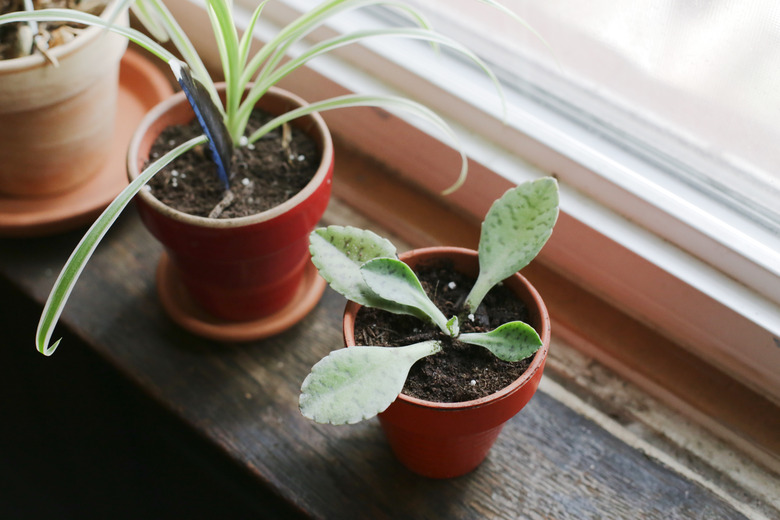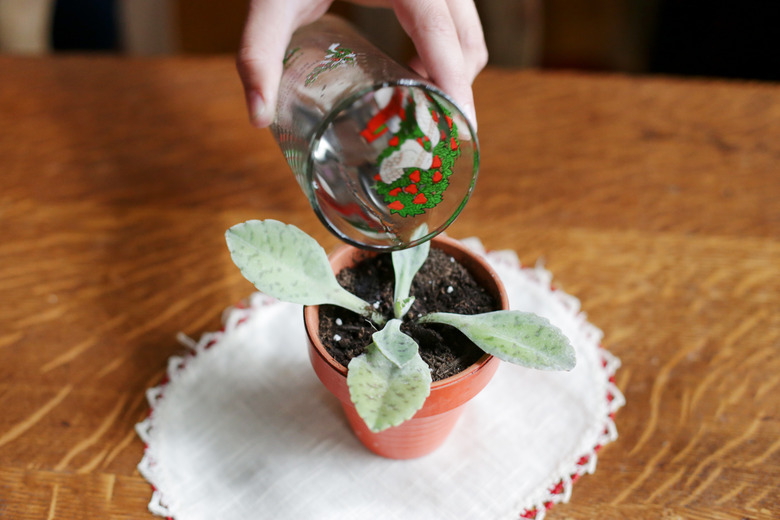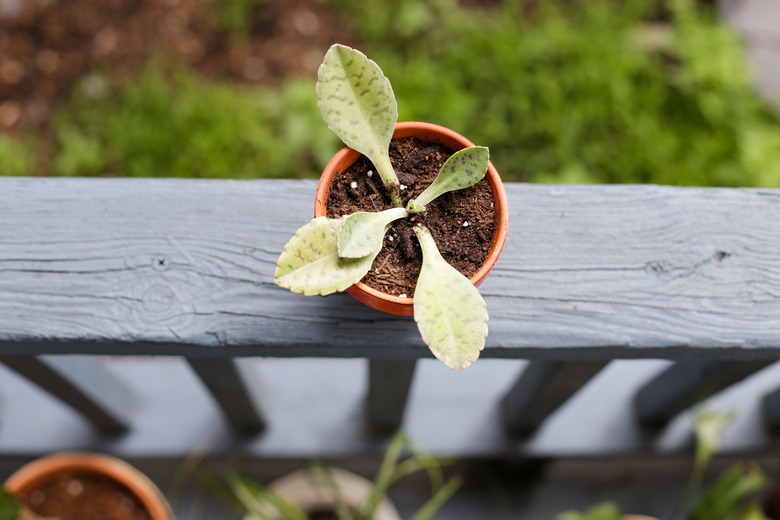How To Care For A Donkey Ear Plant
Donkey ear plants (Kalanchoe gastonis-bonnieri) have evergreen, succulent foliage and tall flower spikes that can reach up to 18 inches tall. They generally flower in fall and early winter, and their red and yellow flowers entice hummingbirds into the garden.
Donkey ears grow in U.S. Department of Agriculture plant hardiness zones 10 through 12, but they also grow well as houseplants. Donkey ears usually die back after flowering, but they produce new plants, or pups, that you can replant to replace the original plant.
Things Needed
-
Measuring spoons
-
1-gallon container
-
Clean rag
-
Rubbing alcohol
-
Plant container
How to Care for a Donkey Ear Plant
1. Give Donkey Ears Enough Sunlight
Plant donkey ears in a garden bed with full, all-day sunlight or with full morning sun and light afternoon shade and in soil that drains well. Indoors, place the plant near a window that receives direct, all-day sun.
2. Water Donkey Ears
Water donkey ears when the top 1 to 2 inches of soil begin to dry out but before the soil is completely dry. Provide just enough water to garden plants to moisten the soil to 6 inches deep. Water potted plants until the excess begins to drip from the pot bottom. Empty any drained water from the drip tray if the pot has one. Donkey ears require watering approximately once per week.
3. Fertilize Donkey Ears
Mix 1/2 tablespoon of an all-purpose, soluble fertilizer, such as a 24-8-16 blend, with 1 gallon of water and use this solution to water the plants instead of using plain water. Apply the solution every two to three months when the donkey ears are actively growing. Alternatively, use half the rate recommended for the specific fertilizer variety. Check the package for instructions, as they vary by brand.
4. Check for Fungal Infections
Feel the stem base and inspect the leaves regularly for signs of fungal growth, such as soft, mushy stems and leaves or visible fungal growth or spotting. These symptoms indicate overly wet soil and rotting roots. Allow the soil to dry out almost completely before watering again. Plants do not usually survive once they have begun to rot.
5. Prune Off the Pups
Trim off the pups, which look like miniature donkey ear plants that form at the tips of the leaves, before the plant dies back after flowering. Wipe the garden scissors or pruning shears with a rag soaked in rubbing alcohol to disinfect them and then cut off the pups where they join to the leaf.
6. Plant the Pups in Pots
Fill a new pot with a peat-, soil-, and sand-based potting mix, such as one labeled for cactus and succulents, if you want to grow more donkey ears from the pups. Use a pot with a bottom drainage hole. Water the soil until it's barely moistened and plant the pup in the pot with just the leaves above soil level. Care for it as you would a mature plant.
7. Protect Donkey Ears in Winter
Bring donkey ears indoors during the winter if your area experiences freezes or extended periods of cold. Place the pot in a sunny window and water when the soil dries out, or about once each week. Move the plant back outdoors in spring or early summer when all danger of frost has passed.
Tip
Garden-grown donkey ears thrive in rock gardens and other well-drained, rarely watered locations. They can tolerate drought with no additional watering once established. With the exception of root rot, pests and diseases aren't usually a problem for donkey ears. Donkey ears work well when grown in hanging baskets.







